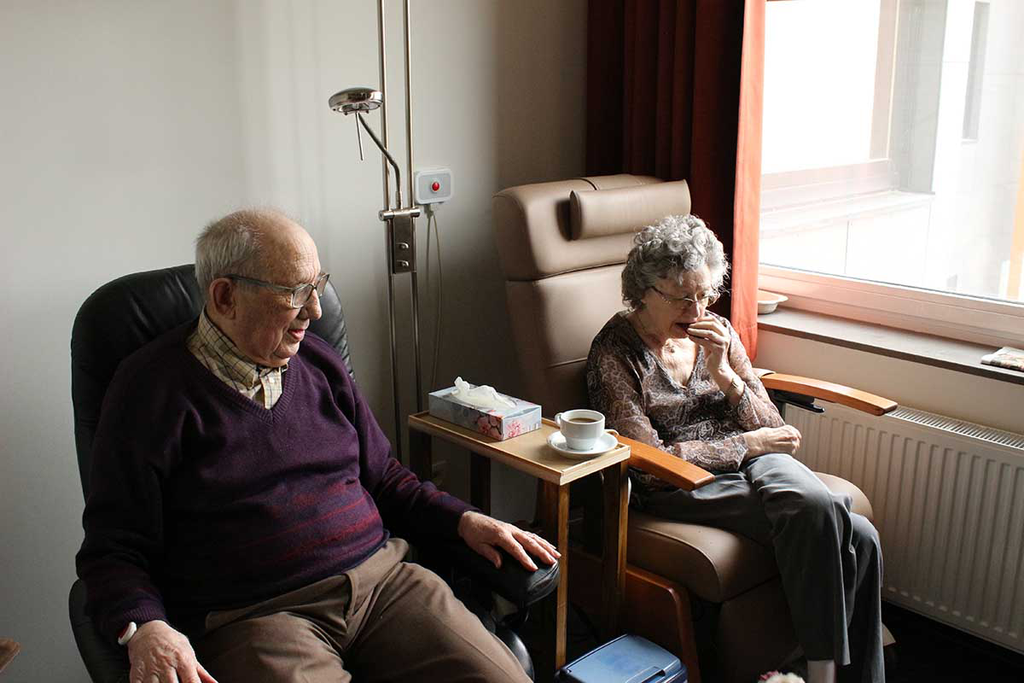Transmission of COVID-19 by aerosols and risk prevention in hospitals and residences
The situation in hospitals, both private and public, in relation to the rapid respiratory transmission of SARS-CoV-2 is of concern. For this reason, many scientists and experts who provide evidence of how COVID-19 droplets from infected patients spread through the air, describe measures and recommendations so that health professionals and patients in hospitals and nursing homes can protect themselves from this infection.
Next, we show you these evidence on the transmission of the virus through the air and the measures we must take to reduce the risk of airborne transmission in hospitals and nursing homes until an adequate and effective vaccination is developed.
Current situation in the transmission of COVID-19 in hospitals and residences
Following the declaration of a global pandemic by theWorld Health Organization, studies have exposed the role of droplets emitted by humans and aerosol particles as the main route of transmission of SARS-CoV-2, specifically what we know as air transmission .

Various studies were carried out within Wuhan hospitals that demonstrate the presence of SARS-CoV-2 in different air samples. And there are even similar findings dating the presence of the virus in various air samples from other hospitals such as the one at the University of Nebraska.
The complexity of the matter makes it very necessary that adequate guidelines be carried out to protect the health of both patients and health workers themselves, especially indoors.
Therefore, we rely on this publication ofMDPI on prevention of airborne transmission of SARS-CoV-2, to make an attempt below to suggest useful guidelines for controlling current and future viral pandemics in hospitals and nursing homes.
Guidelines and recommendations for the prevention of the transmission of SARS-CoV-2 in Hospitals and Nursing Homes
The transmission of SARS-CoV-2 by aerosolized particles in the air in closed places with inadequate ventilation, is especially critical in hospitals and nursing homes as it has been found that this is where the virus infection is spreading at a faster rate despite the use of personal protective equipment PPE and masks.s.
But fortunately for the prevention of occupational risks in hospitals there are measures that can be followed to avoid this type of accident.
Recommendations to avoid the risk of coronavirus transmission in hospitals and nursing homes

Given the obligation to implement effective prevention measures for airborne transmission of such infectious and emerging diseases as COVID-19, in this academic article published inMDPIthe following actions are suggested:
- Use humidifiers evaporative with portable air purifiers and a suitable mechanical ventilation system ;
- Valveless respirators for healthcare workers during surgical and other medical procedures;
- Avoid using aerosol procedures with nebulizers. Instead, use metered dose inhalers ;
- Avoid using hydrogen peroxide disinfectants indoors;
- Avoid using the UV-C technique too often, because it increases ozone concentrations indoors.
Other measures and actions to prevent contagion in hospitals and nursing homes
In the first place, it is important that we control whether the hospital in which we are located has the necessary resources and prevention protocols in contact with biological agents. As could be, for example, keeping risk groups, such as pregnant women, away from the areas most susceptible to infection.
Fundamentally, measures that we must always carry out in hospitals and residences are:
- The use of face mask , face shield or safety glasses.
- Wash our hands properly and forearms before and after caring for each patient, and before each meal.
- Ventilate properly indoor air and purify the air.
- Measure CO2 levels in the environment in real time , to protect healthcare workers and patients in hospital rooms - and other interior rooms.
In conclusion, for control airborne transmission of SARS-CoV-2 in indoor public places, especially hospitals and nursing homes , we recommend from the different studies mentioned:
- The use of evaporative humidifiers especially in dry, cold conditions and with little sunlight;
- Use portable air cleaners for greater protection against viral aerosols;
- Avoid using hydrogen peroxide disinfectants during medical procedures and UV-C technique too frequently;
- Use systems mechanic ventilation ;
- UseCO2 monitors to check levels in real time and protect healthcare workers and patients in hospital rooms.
Finally, and as the authors of the MDPI publication emphasize,“healthcare workers must be properly trained to follow these guidelines mentioned above”. And they add:“Such guidelines, if adequately provided by health authorities and implemented by health workers, could be beneficial in reducing the risk of airborne transmission in hospitals and nursing homes until adequate vaccination is developed and effective..

Leave a comment
Please note that comments must be approved before being published